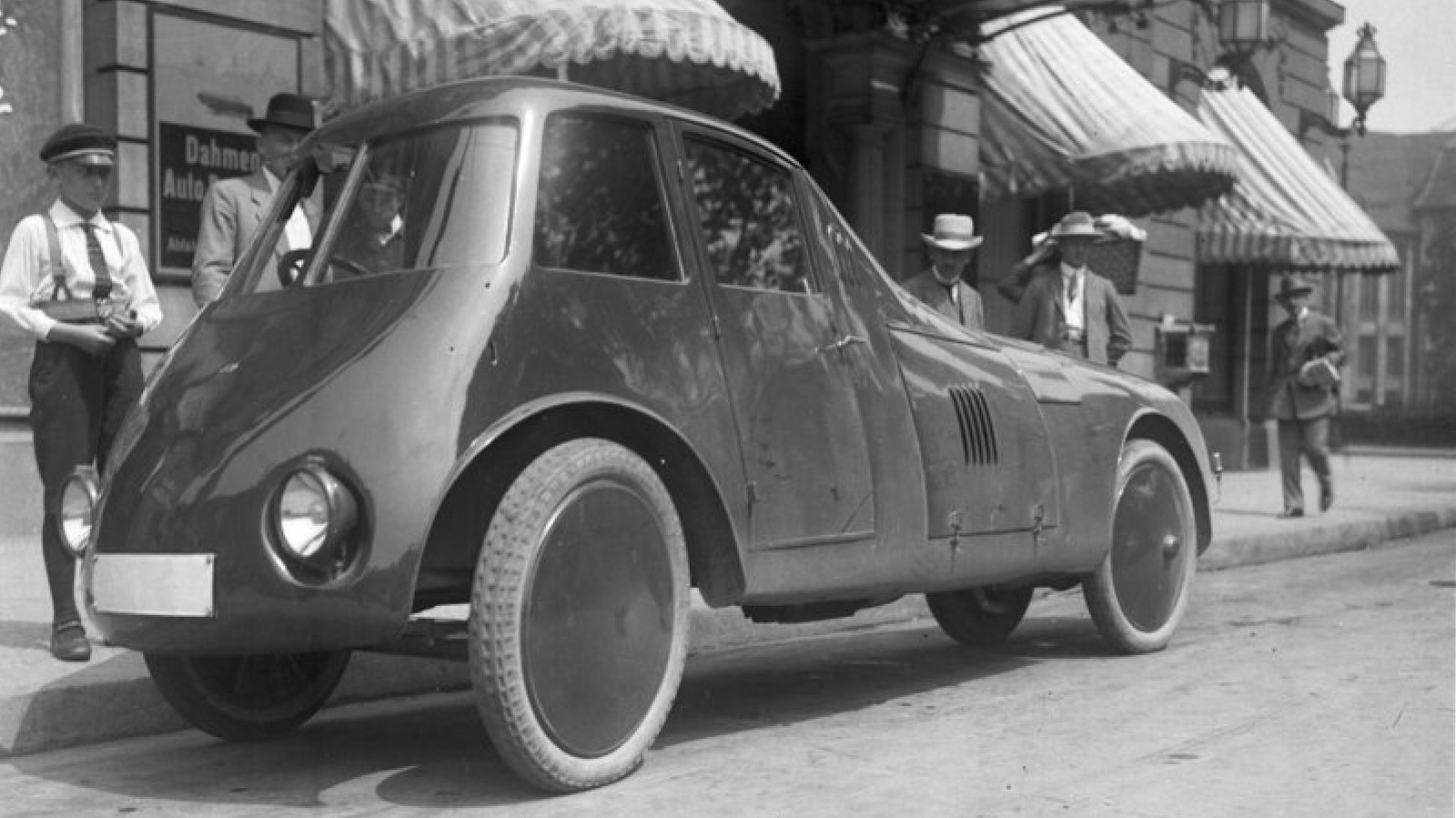
In the early days of the automobile, there were some truly wild ideas as designers around the world tried to find the best form for the autocar. Most of these creations were boxy and slab sided, with little thought given to efficiency and aerodynamics, but a car designed by Romanian engineer Aurel Persu did things a little differently.
Persu was an aerodynamic obsessive, and was actually the first person to place car wheels under the bodywork to make his designs more efficient. In the 1920s, his obsession with the airflow over a car reached fever pitch and he was granted a patent for a teardrop-shaped car.
The bizarre looking creation was featured in a film from YouTube channel Cool Ideas this week, which breaks down the history of this mad creation and unearths the developments that helped create a car that produces less drag than a modern Porsche 911.
As slippery as a falling raindrop
The car’s design was radical for the time, with the engine at the rear and the seats for the driver and passenger right up front. Crumple zones, what crumple zones? This layout meant that the car needed to be taller at the front and dramatically sloped back at the rear, making it look like a falling raindrop.
The design went further still, as the rear wheels were placed closer together than the front to help the entire car pinch together and reduce drag. The result was an impressively low drag coefficient of 0.28 and that was much, much less than other cars of the time, which were usually closer to 0.8. In fact, the car is so slippery that it creates less drag than a modern Porsche 911, which has a coefficient of about 0.3.
The incredibly aerodynamic surfaces of the car mean that at 60 mph the Persu required about 20% of the power as other cars of the era. Despite needing less power than most, the car came with a 40 hp engine at the back, which was roughly double what most other 1920s cars were playing with.
A clever car that never made it to production
The design sounds like a success then, right? Well, in one way it definitely was, since it proved Persu’s ideas worked and met every aim he had for the car’s design. He was eventually awarded a patent for that in Germany, and several automakers even attempted to buy the designs from him, but Persu never found the right buyer.
This was reportedly because he feared that his rivals only wanted to acquire the design in order to ensure that it never made it to production. Ironically, holding onto the designs for himself also ensured that his creation was confined to the history books.
That’s a shame, because the design could have paved the way for more streamlined models and investigations into aerodynamics decades ago. Today, this research is mostly centered around electric cars in order to improve their range and efficiency, or streamlined cars that are out to set new land speed records.

